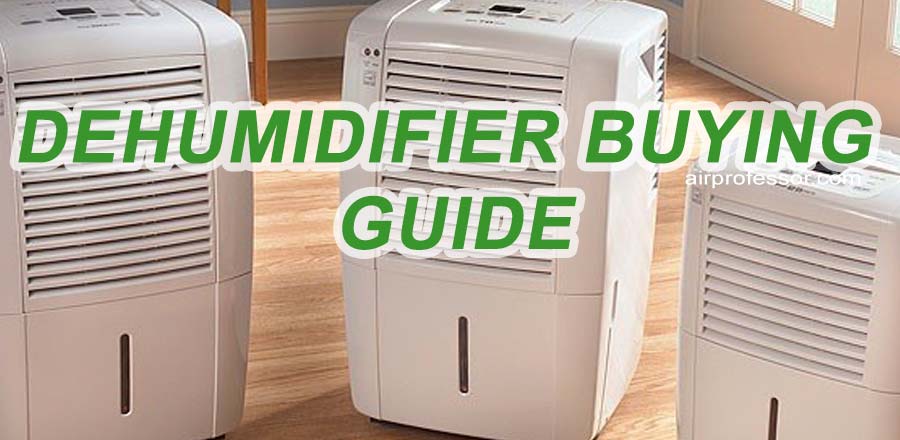Safe homes mean a happy and comfortable life. Most of us have kept our homes safe by keeping them clean and by making the air clean. However, have you kept your house safe from humidity? Are you aware of the safe humidity levels? Humid environments especially in our homes may cause illnesses and damage to property. Too much moist air means you or your loved ones will suffer allergies or worse even develop asthma. It means musty air, damaged electronics, books, and clothing. It also means dripping pipes, peeling walls, warping woods, as well as blistering paint. You take care of abnormal humidity levels by using a dehumidifier.
Why a dehumidifier?
You might have already taken care of the air purity in your home by using sophisticated machines like air conditioners. But, you will still need to take care of the excessive moisture from areas that are prone to dampness like bathrooms, crawl spaces, cabinets and safes, as well as basements. Dehumidifiers help in maintaining a certain acceptable amount of humidity. This is called relative humidity (RH) measured in percentage (%). During summer, when heat is the order of the day, a relative humidity of around 50% is acceptable. During winter; the cold conditions that lead to condensation build-up on your windows, the number should be as low as 30%. Dehumidifiers have calibration markings in percentage.

How to choose dehumidifiers
When searching for a unit to keep the air in your space dry, there are several factors to keep in mind. These factors will guide you in navigating through the somewhat congested and confusing market. Below are the factors to look out for;
- Size: – dehumidifiers come in different sizes. The size of a unit dictates the amount of moist air it will eliminate from the surrounding. Large dehumidifiers are generally perfect for effective moisture removal. Small units will struggle to remove air from considerably larger areas.
- Portability: – this goes hand in hand with the size factor. The small units will be easy to carry around. If you are looking to have a unit that you can move from one room to another, then choose the smaller units.
- Low temperature operation/ Automatic defrost: – Areas like basements are bound to have very low temperatures. When looking for units to be used in such areas, it is recommended that you look for one that has the defrost sensor. This sensor enables quick cycling and reduces frost accumulation that might lower functionality.
- Built-in Humidistat: – A unit with this feature will command operation by turning the unit on/off in relation to the humidity setting.
- Storage tank capacity: – All dehumidifiers have storage units for the collected moisture. If you are not in the mood for emptying the tank, then a unit with a continuous drainage port will work for you.
- Washable air filter: – A model with a removable air filter makes it easy to clean the dust particles collected making maintenance a breeze.
- Brand loyalty: – If you have trusted a brand for a long time, then it is never a bad idea to purchase the next unit from the same brand.
- Price: -Your pocket size dictates what unit you can find in the market. Dehumidifiers can be as cheap as $30, and as expensive as $300.
Table1: Choosing the size of a dehumidifier
NB: It is advisable to buy dehumidifiers with higher CFM than your rooms’ average CFM.
| Relative Humidity (RH %) (specific conditions) | Air Changes Per Hour (ACH) | Airflow/Cubic Feet Per Minute (CFM): Cubic feet x ACH/60 (e.g. 500 x ACH/60) | Amount of air to be dehumidified/day (Pints for every 500 square feet) |
| 90-100 (Extremely wet, contains standing water/puddles of water) | 6 | 50 | 16 pints (add 7 pints for every extra 500 square feet) |
| 80-90 (Wet, smells and feels wet, molds, mildew, leaks, water stains) | 5 | 41.67 | 14 pints (add 6 pints for every extra 500 square feet) |
| 70-80 (Very damp, can smell mold, mildew, no visible water stains) | 4 | 33.33 | 12 pints (add 5 pints for every extra 500 square feet) |
| 60-70 (Moderately damp, room smells musty on humid weather) | 3 | 25 | 10 pints (add 4 pints for every extra 500 square feet) |
Table2: Use this table before you hit the market for dehumidifier shopping
| Conditions in your space | Square footage of your space | ||||
| 300sq. ft. | 500sq. ft. | 700sq. ft | 1000sq.ft. | 1500sq. ft. | |
| Slightly damp (Damp and musty smell, 50-60% Humidity) | 30-pint | 40-45-pint | 50-pint | 60-pint | 70-pint |
| Moderately damp (Damp and musty smell, 60-70% Humidity) | 30-pint | 40-45-pint | 50-pint | 60-pint | 70-pint |
| Very damp (Wet, musty smell, damp spots on walls and floors, 70-85% humidity) | 40-pint | 50-pint | 60-pint | 70-pint | 90-pint |
| Wet (Wet, musty smell, seepage on walls and floors, mold growth, 85-100% humidity) | 40-45-pint | 50-60-pint | 60-70-pint | 70-pint | 90-100-pint |

Leave a Reply